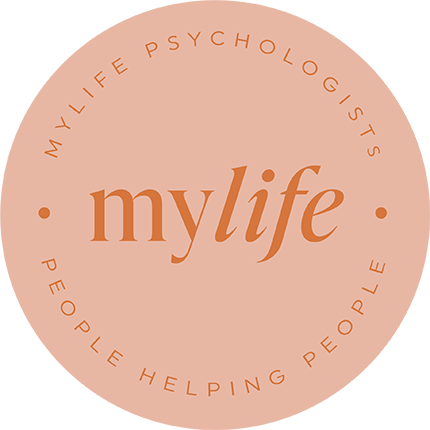In a culture that celebrates “the hustle” and constant productivity, setting boundaries at work can feel uncomfortable or even risky. You might feel guilty at the thought of leaving work emails to pile up over the weekend or you might dread having the conversation with your boss about taking much needed time off for fear of their judgement. Yet without clear limits, stress creeps in, relationships strain, and burnout becomes a very real threat. Healthy boundaries protect your time, energy, and sense of self. They allow you to bring your best to both work and life outside it.
What Are Boundaries and Why Do They Matter?
Boundaries are the personal guidelines we set to safeguard our emotional, mental, and physical wellbeing. In the workplace they help clarify:
- Time: When you’re available (and when you’re not)
- Energy: How much work you can realistically take on
- Space: The difference between your professional and personal life
- Communication: The tone and channels you feel comfortable using
By defining what is and isn’t acceptable, boundaries:
- Reduce resentment and overwhelm
- Enhance focus and productivity
- Strengthen professional relationships built on respect
- Support long-term career satisfaction and mental health
Signs You May Need Firmer Boundaries
Do any of the following sound familiar?
- Feeling drained, irritable, or resentful after the workday
- Regularly saying “yes” when you want to say “no”
- Feeling guilty about taking breaks, leave, or sick days
- Work bleeding into evenings, weekends, or holidays
- Taking responsibility for tasks outside your role or control
If your eyes widened in recognition or you’ve subconsciously nodding along, it may be time to reassess your limits. It can feel overwhelming to recognise these behaviours in yourself, and thoughts or worries like “What do I do now?” might start creeping in. But do not fear! Recognising these red flags is the first step towards change, and you might have already taken it.
Boundaries Aren’t Brick Walls – They’re Adjustable
A common myth is that boundaries must be set in stone. In reality, healthy boundaries are flexible and evolve with your workload, life stage, and values. They are not rigid rules, but living practices that shift as your needs and circumstances change. Boundaries that were once useful and beneficial might eventually start to feel restrictive or irrelevant. You might feel pressure to maintain them simply because you think you “should.” However, it’s important to regularly reflect on what is and isn’t serving you.
Flexible boundaries mean that you might:
- Decline after-hours emails most nights but make an exception during a critical project
- Block out lunch breaks on your calendar yet stay available for genuine emergencies
- Opt out of group chats in the evenings then re-engage during work hours
Intentional flexibility helps boundaries feel realistic and supportive rather than restrictive. It’s about choosing when to bend a boundary, not abandoning it entirely. It is important to remain connected to your values, so even when your boundaries stretch, they still serve your wellbeing.
How to Start Setting Boundaries at Work
So, you’ve recognised that you might need some boundaries in place. Now what? The key is to start small, especially if this feels new for you. Boundary setting is a skill, and like any skill, it improves with practice. It might feel uncomfortable and even a little alien at first. This is completely normal, especially if you are used to putting others’ needs ahead of your own or avoiding conflict. With practice, this discomfort usually fades as boundary setting starts to feel more natural and empowering.
Getting started can feel daunting, so here are some practical steps to help you build and maintain healthy boundaries gradually:
- Clarify Your Limits: Reflect on what you need to stay productive and well. Consider work hours, response times, meeting loads, and how many projects you can manage without tipping into stress.
- Communicate Assertively: Clearly and kindly state your boundaries. For example:
“I’ll be offline from 6 pm, but I’ll respond first thing tomorrow.” No lengthy justifications are required. - Begin Small: Choose one area (such as reclaiming your lunch break) and practise holding that line consistently before adding more.
- Use Technology Wisely: Schedule emails to send within business hours, set ‘Do Not Disturb’ on messaging apps, or update your calendar to signal focus time.
- Review and Adjust: Check in with yourself regularly. Are your boundaries still working? Do they need tightening or loosening? Adaptive boundaries remain effective boundaries.
Managing Reactions to Your Boundaries
Not everyone will immediately accept your new limits, especially if they have long benefited from your constant availability. You can expect:
- Surprise or resistance because change can unsettle established routines and expectations, causing discomfort or confusion
- Testing where some colleagues or friends may push your boundaries to see if you will revert to old habits or give in
- Frustration or resentment as people may express irritation because your new limits disrupt their usual ways of working or relating
- Eventual acceptance when healthy people learn to respect clear, consistent boundaries and appreciate the balance they create
Remember that pushback often reflects others’ discomfort with change rather than a problem with your actions. It is not a personal attack. If challenged, stay calm and composed. Reaffirm your limit firmly and kindly and when appropriate, offer realistic alternatives such as adjusted turnaround times or designated check-in moments to maintain collaboration while protecting your wellbeing.
When and How to Seek Extra Support
It is important to recognise when you might need some extra support. You may have noticed some of the following signs:
- Worries or stress about work starting to spill over into other parts of your life
- Finding it harder than usual to complete everyday tasks
- Having trouble getting good quality sleep
- Withdrawing socially
- Losing interest in activities that once brought you joy
These are important warning signs that things might not be going well and that you could benefit from support to get back on track. Additionally, if setting boundaries feels overwhelming or if you are already experiencing burnout, seeking professional help can make a significant difference.
Therapies such as Cognitive Behaviour Therapy (CBT) or Acceptance and Commitment Therapy (ACT) can help you:
- Identify unhelpful beliefs (for example, “I must be available 24/7”)
- Develop practical strategies for managing stress
- Learn to set and maintain healthy boundaries
- Build assertive communication skills
- Strengthen self-compassion and resilience
Working with a psychologist provides a safe space to practise new strategies and maintain accountability.
In Conclusion
Setting boundaries is not selfish. It is a commitment to protect your wellbeing and sustain your capacity to do good work. Think of boundaries as the framework that allows you to show up fully in all areas of your life. Start small, stay consistent, and remember that you are allowed to choose what works best for you.
Boundaries help create balance and clarity, reducing stress and improving your relationships both at work and in your personal life. Research states that over time, practising healthy boundaries can lead to greater confidence, self-respect, and wellbeing.
If you’d like personalised support in creating healthier work-life boundaries, our team at MyLife Psychologists is here to help. Reach out any time.
References & Resources
Chernata, T. (2024). Personal boundaries: definition, role, and impact on mental health. Personality and Environmental Issues, 3(1), 24-30.
Creating boundaries to maintaining a healthy work-life balance. (2023). International Journal of Multidisciplinary Research in Arts, Science and Technology, 1(3), 24-30.
9 tips for setting healthy boundaries, Relationships Victoria.
How to Set Healthy Boundaries and Build Positive Relationships, Positive Psychology








